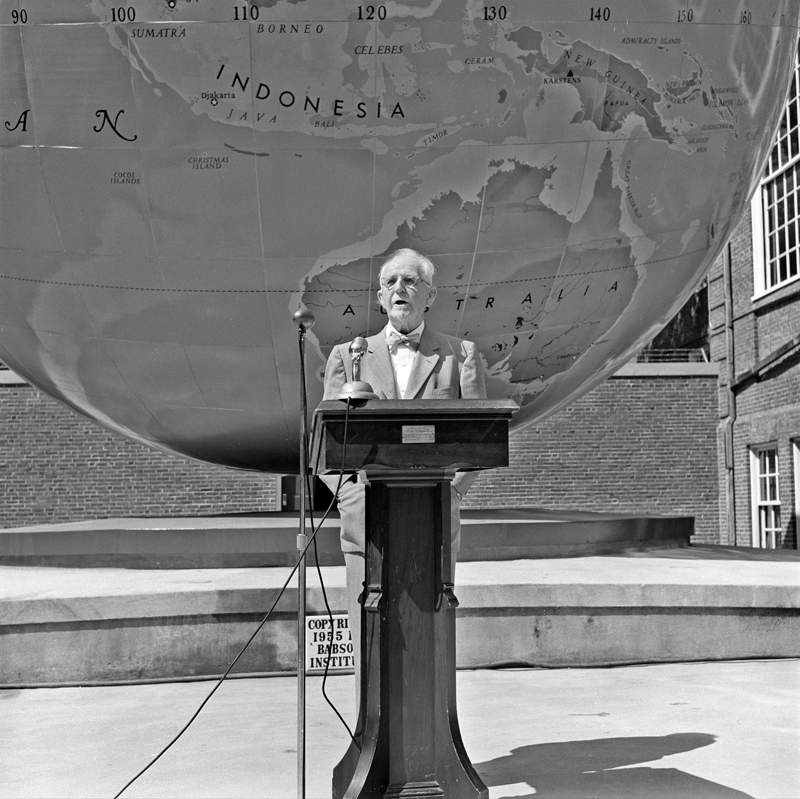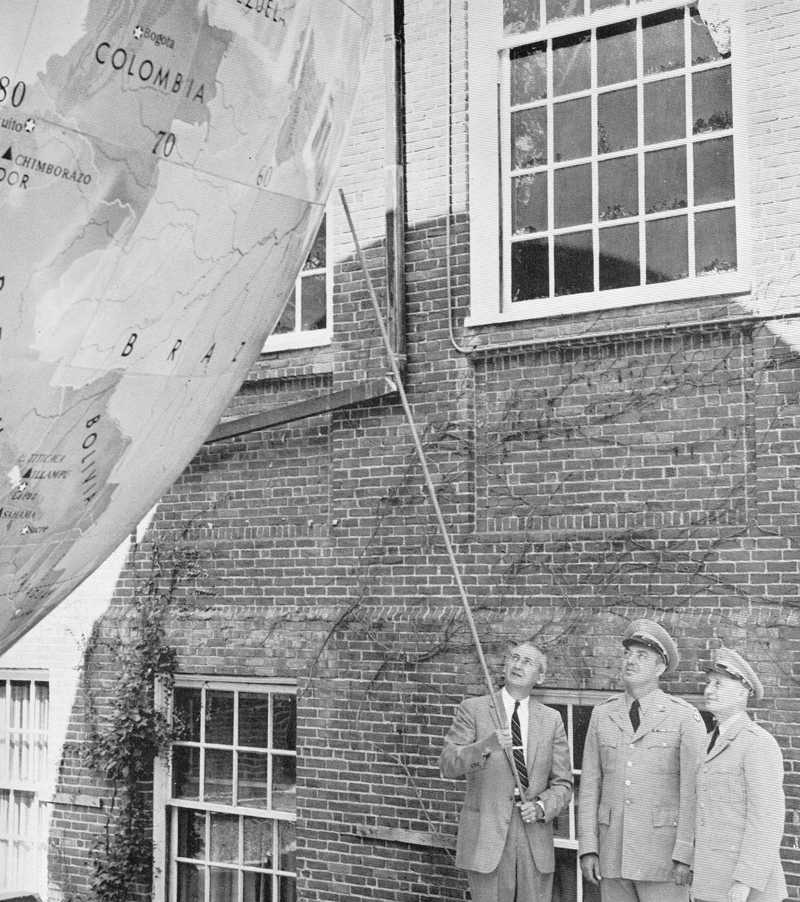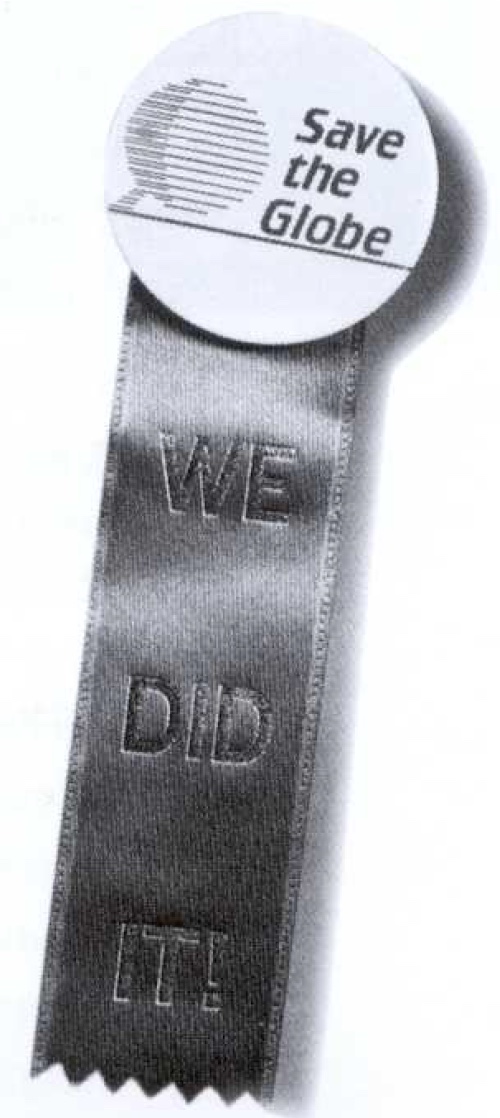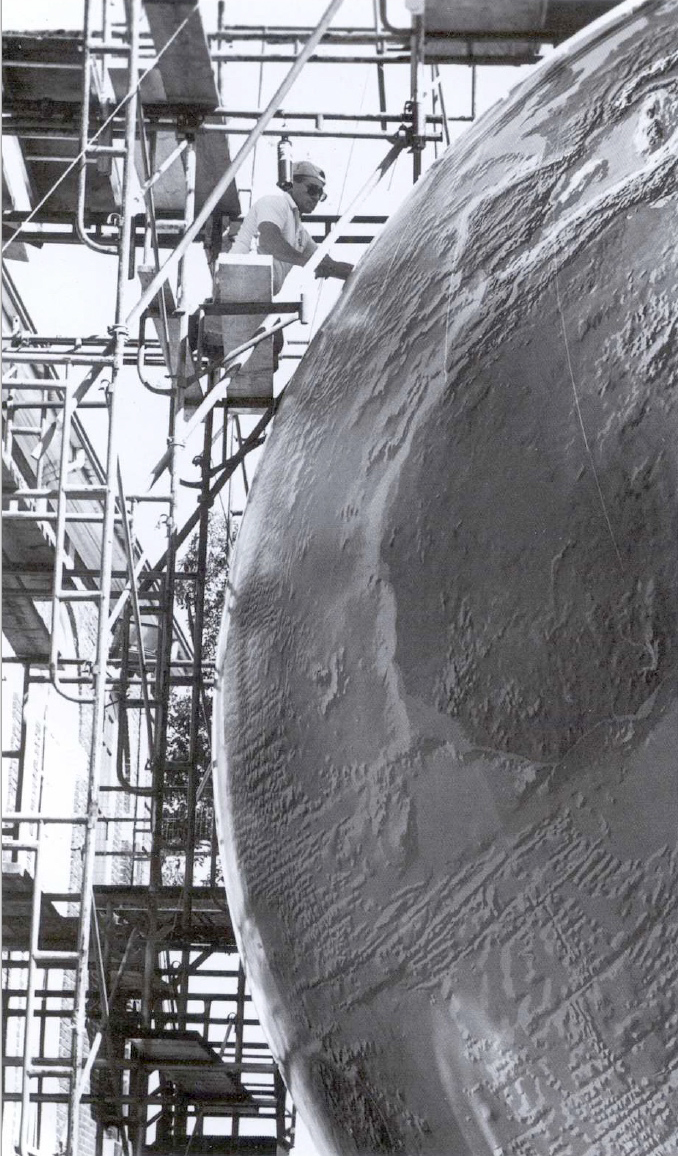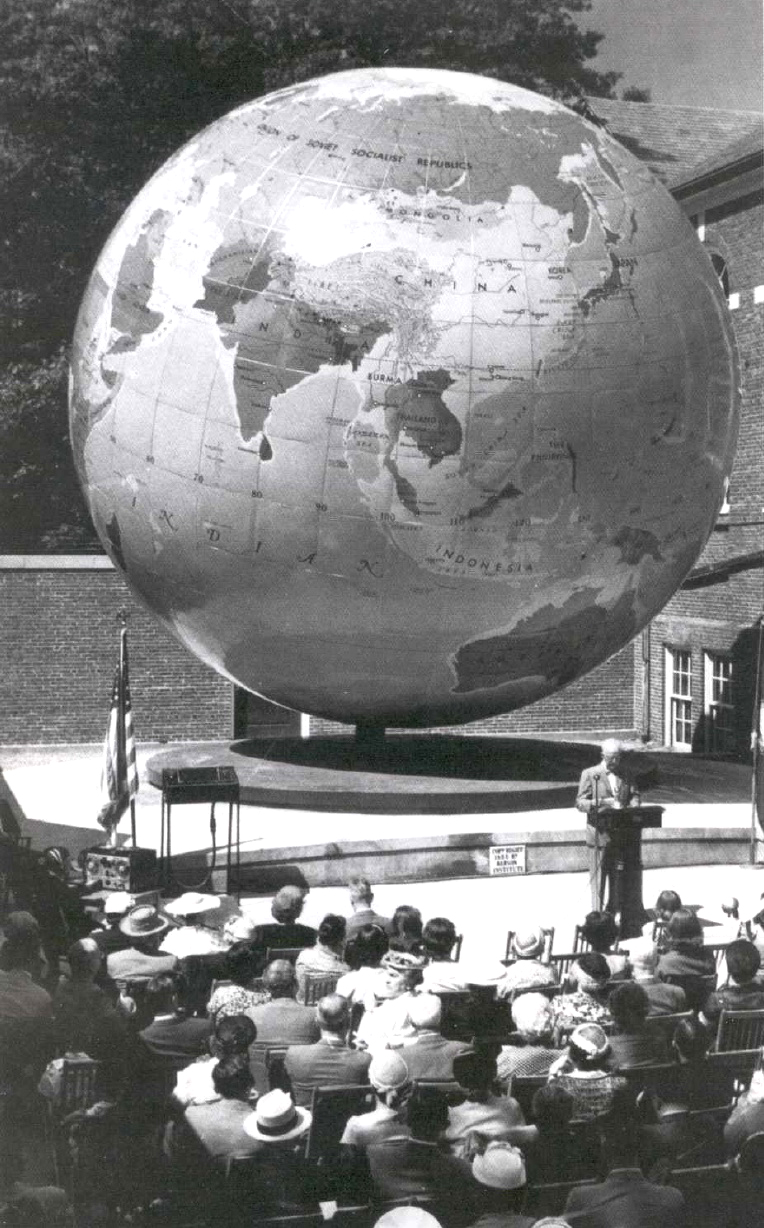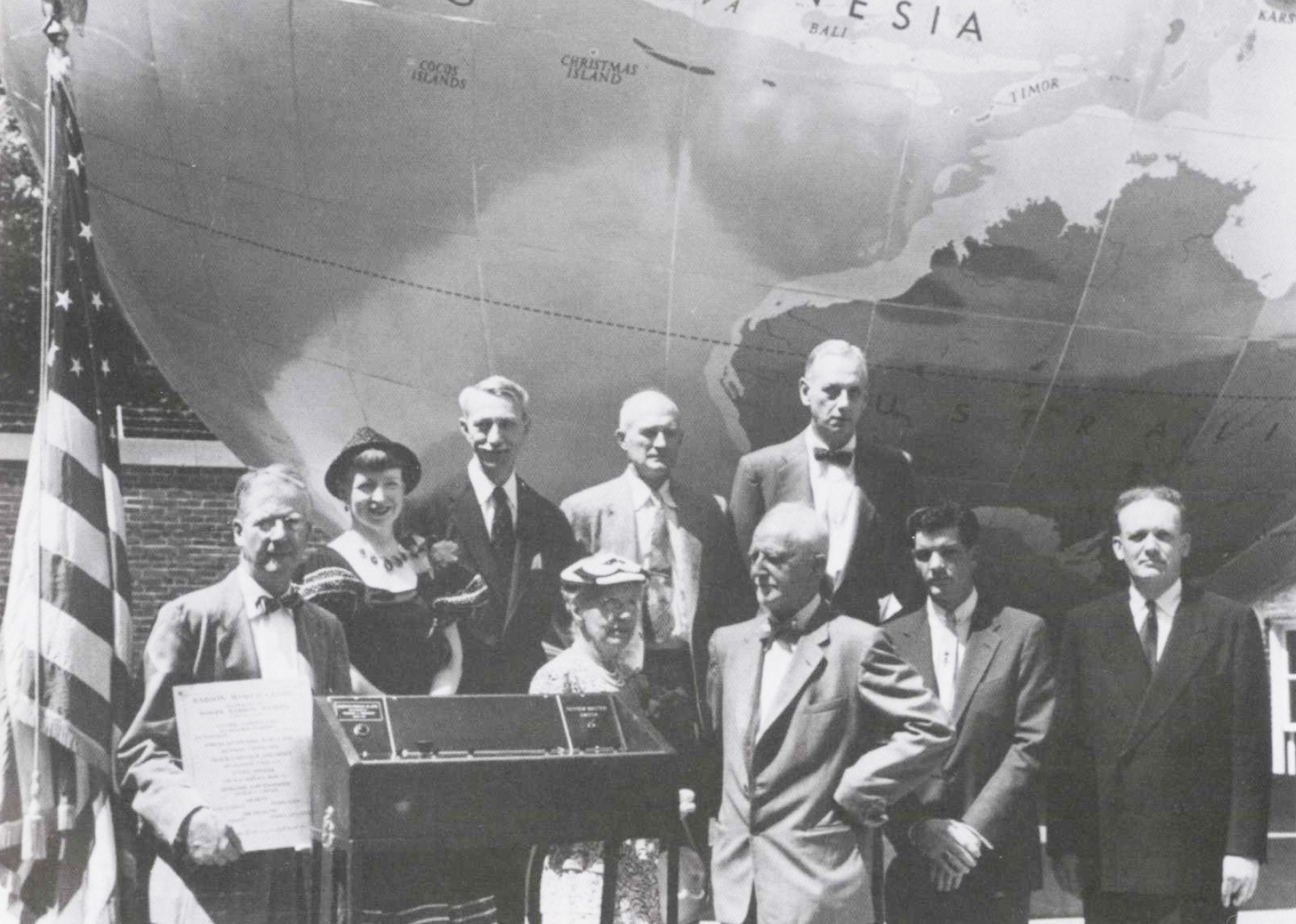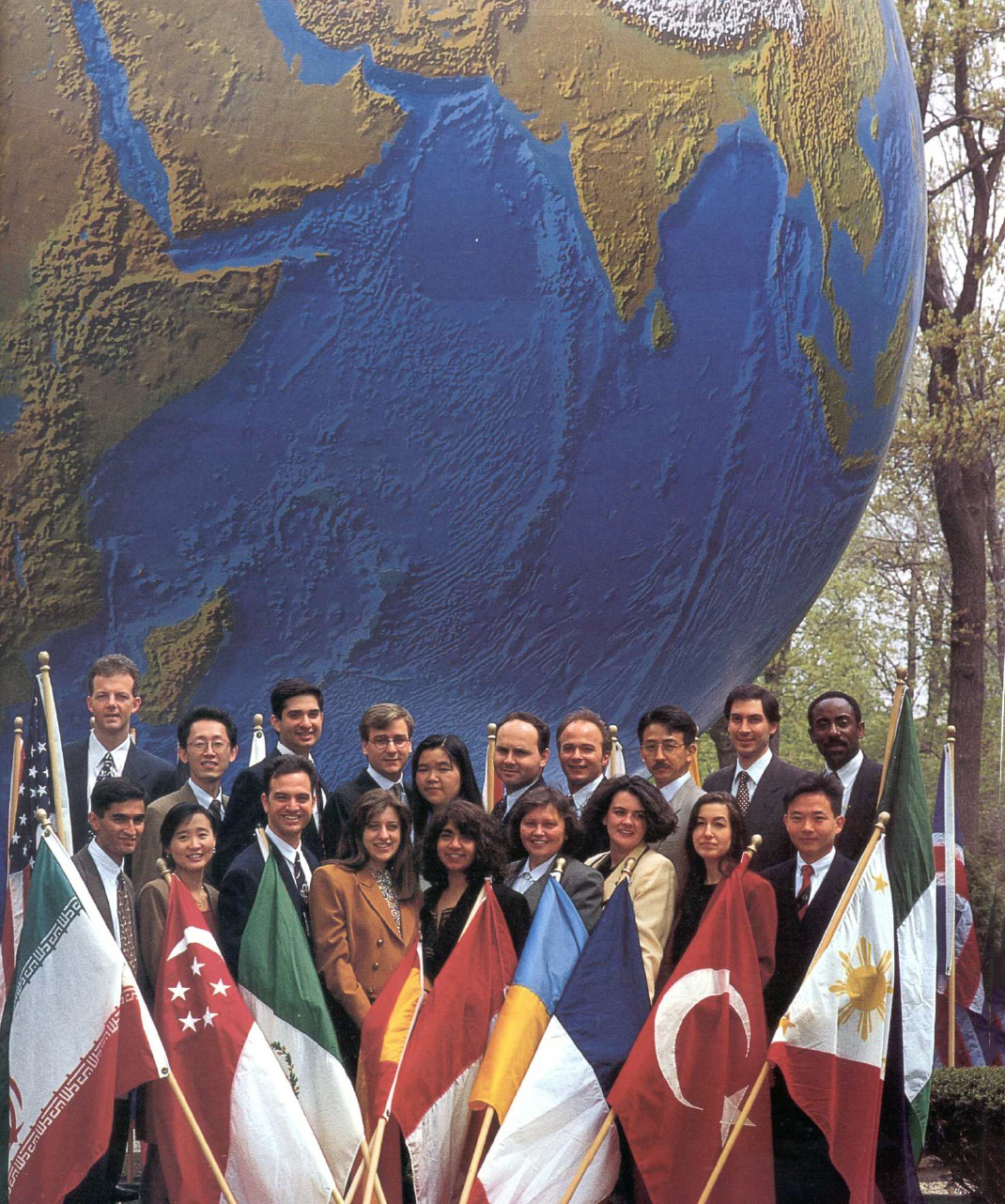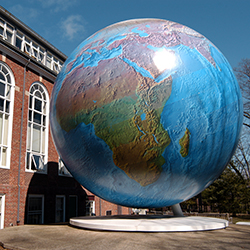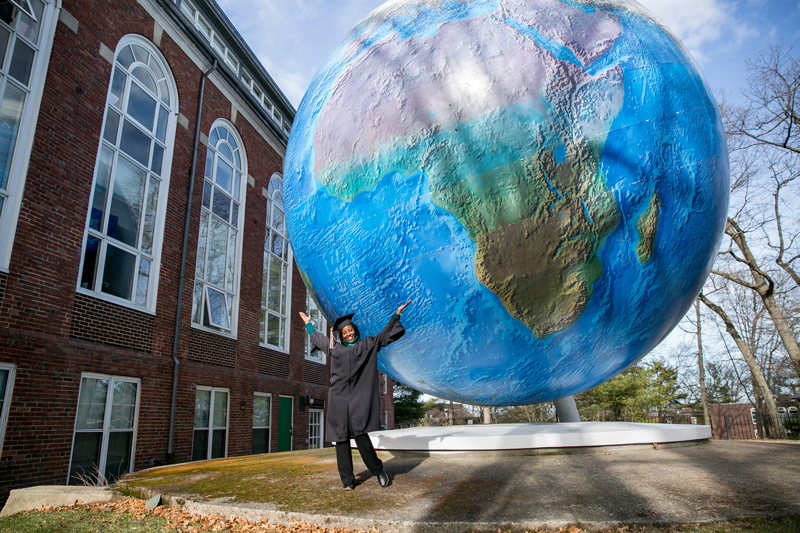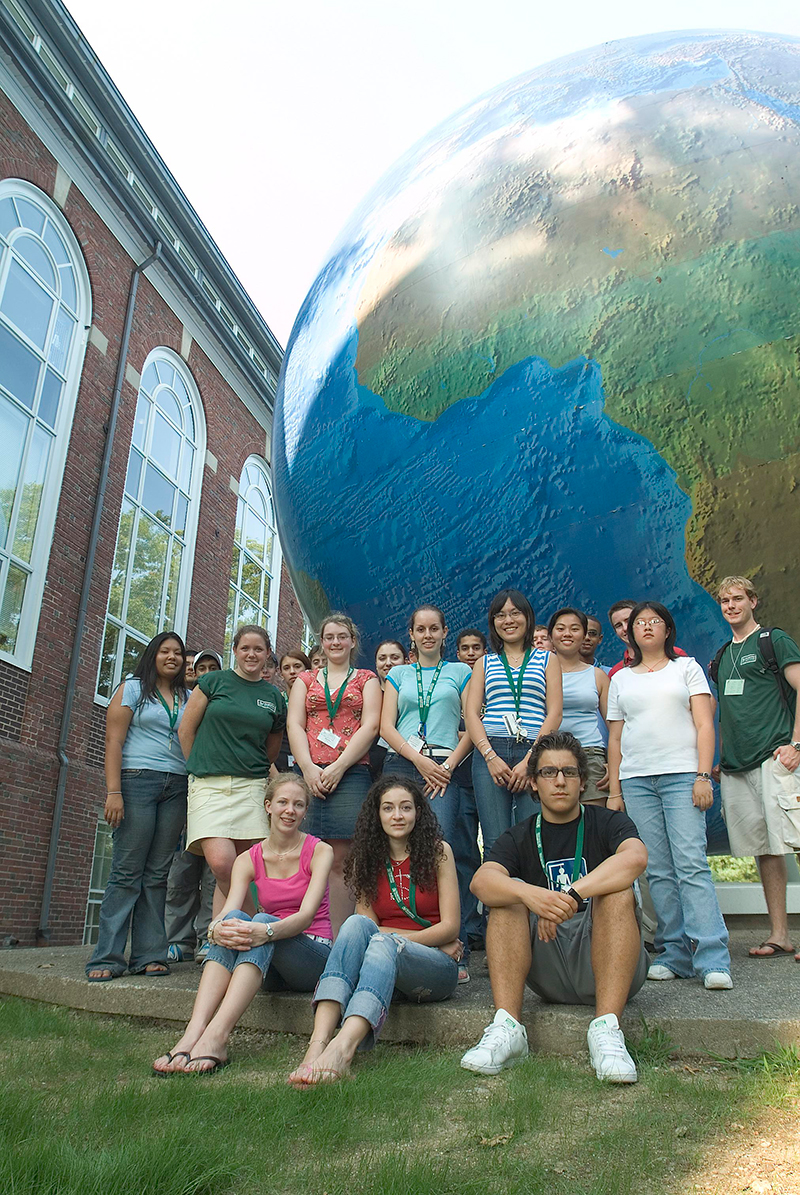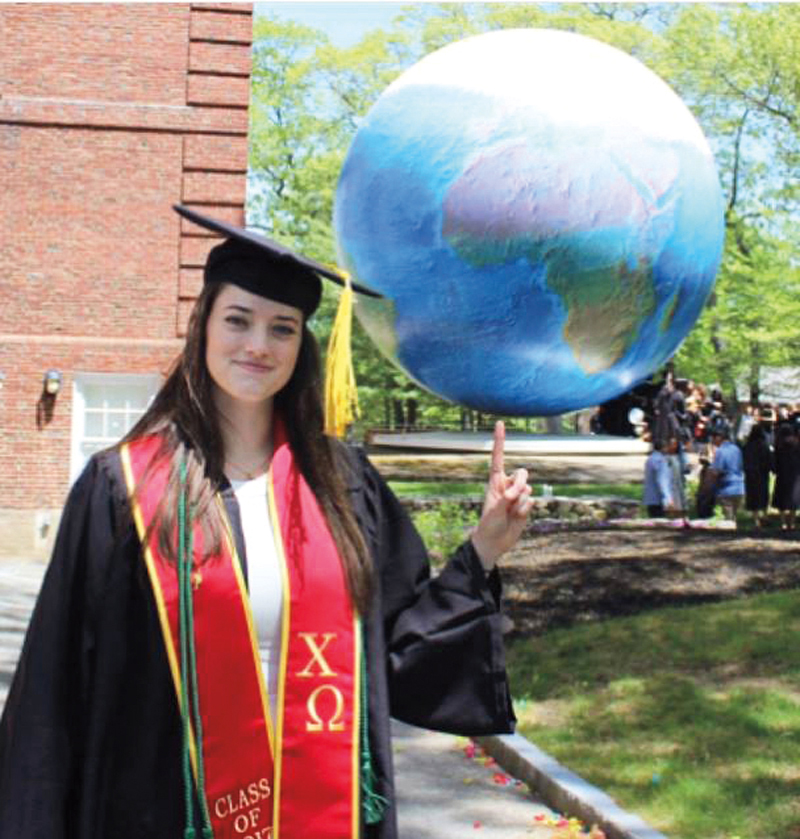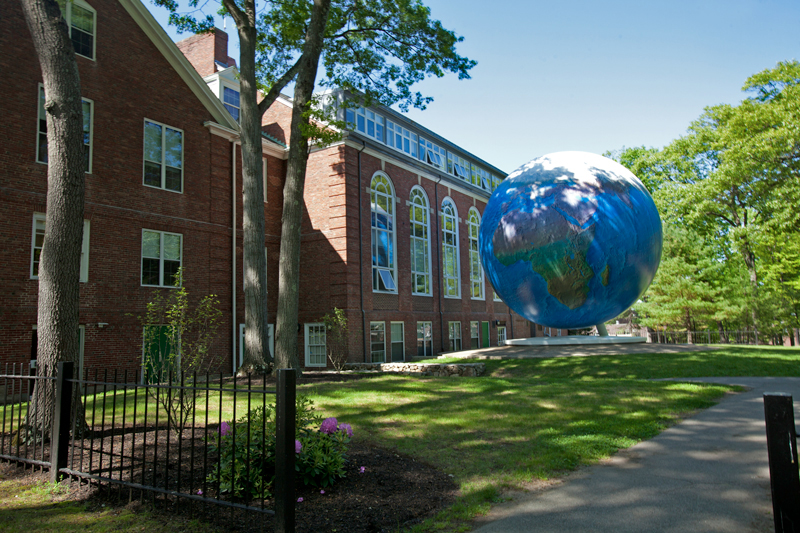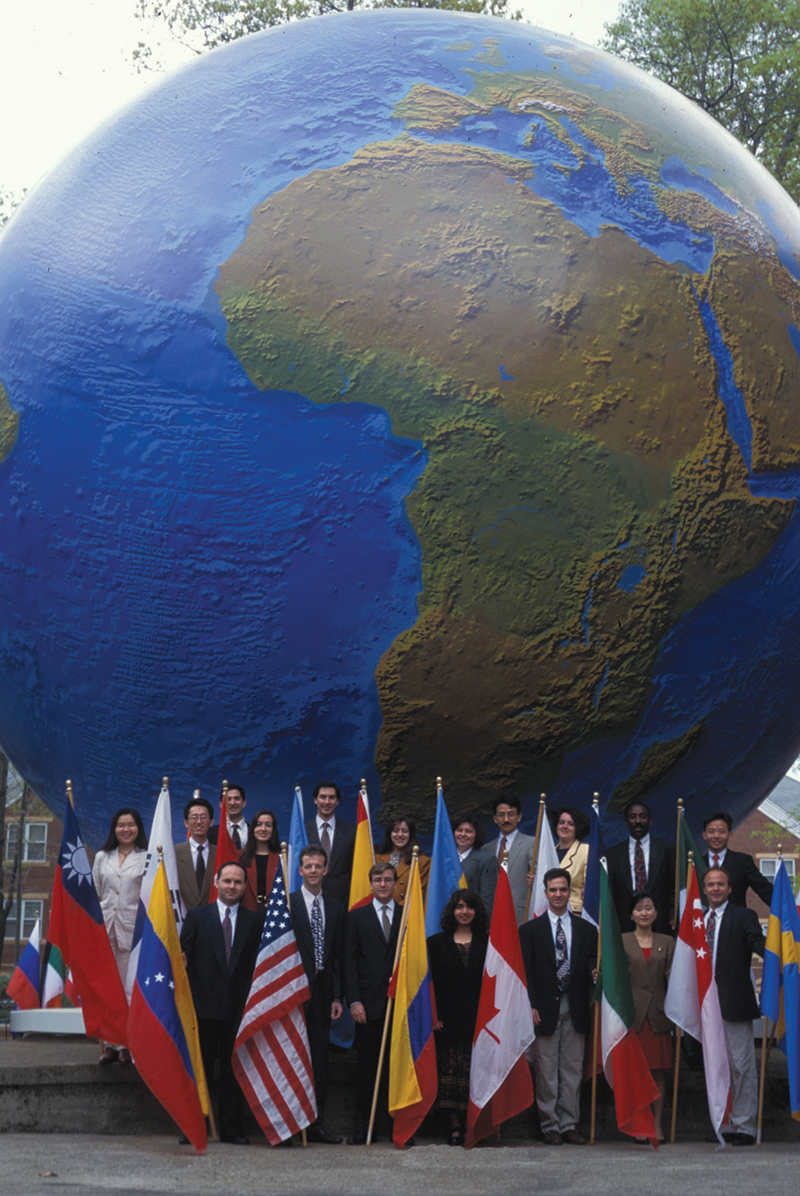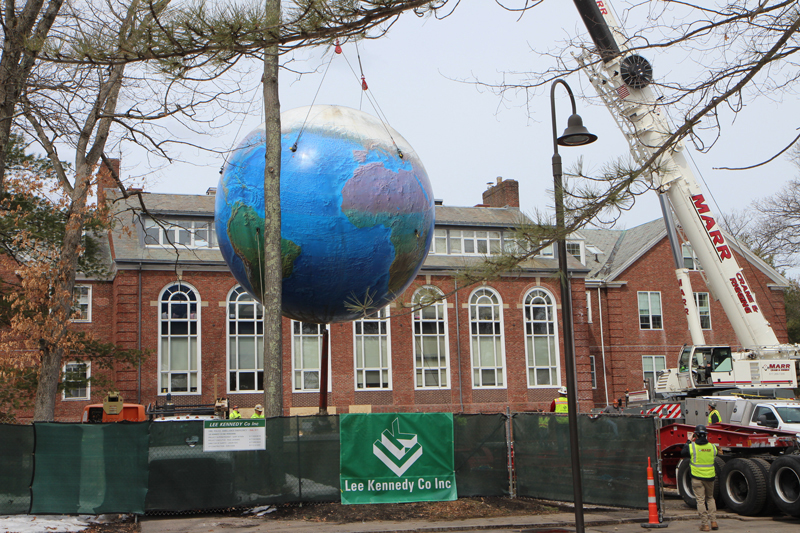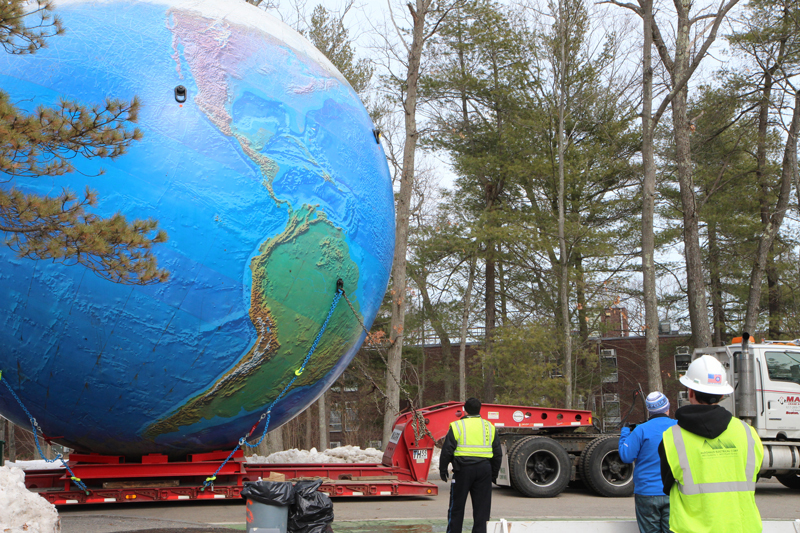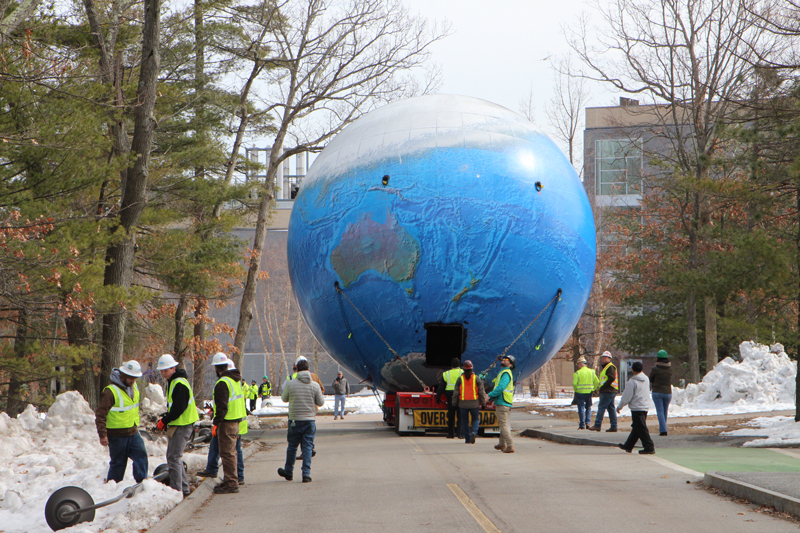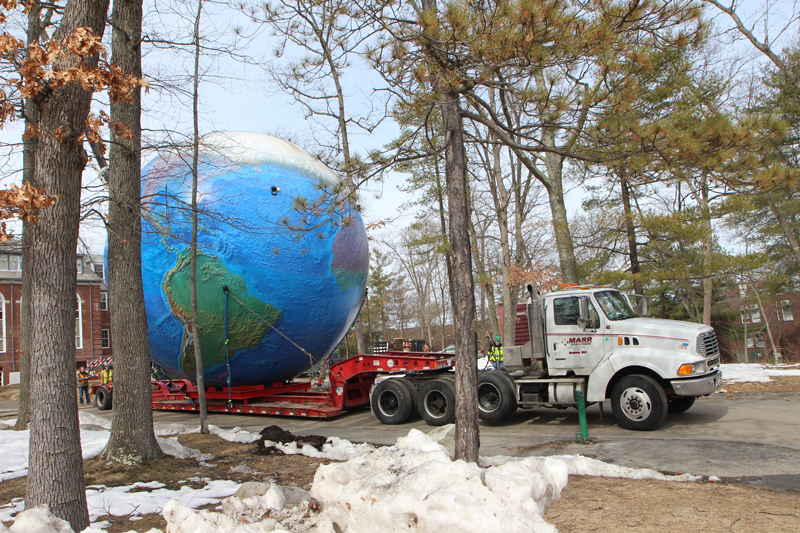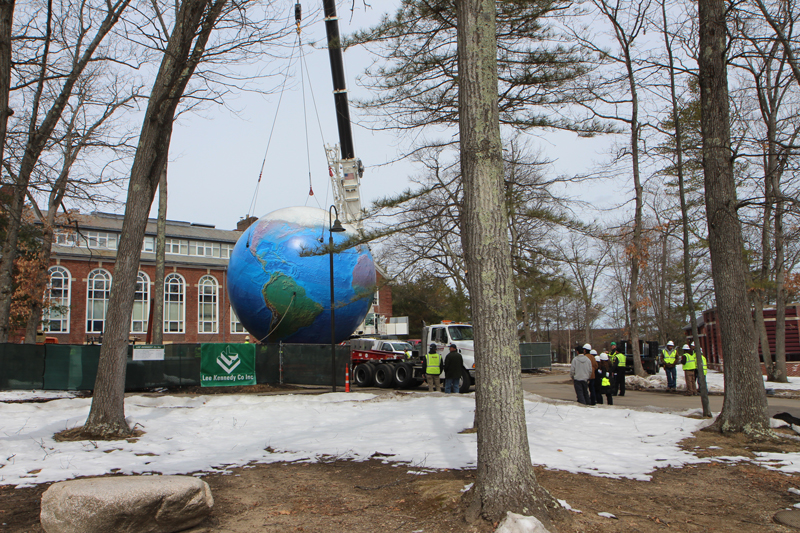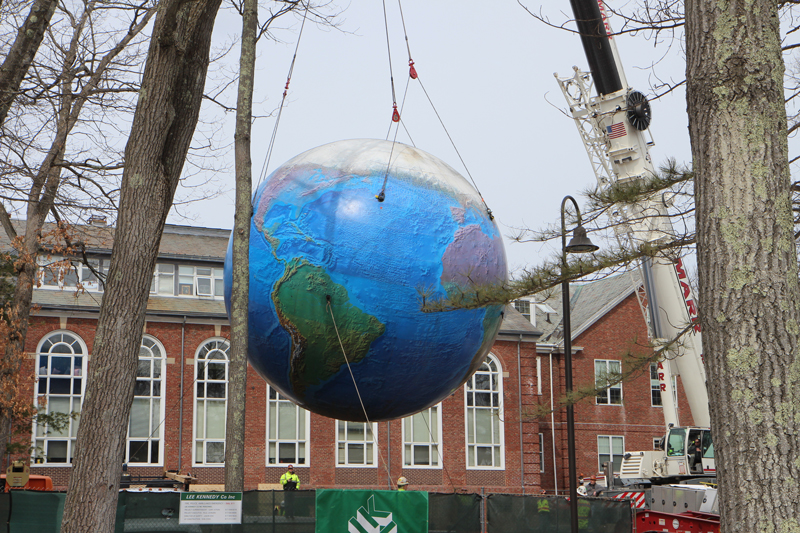Babson World Globe
On March 23, 2018, the Babson World Globe was moved and is now under much-needed restoration. The Globe will be rededicated May 2019 in Kerry Murphy Healey Park, where it will spin and inspire Babson students as a prominent symbol of the College’s commitment to our global community, and respect for Roger Babson’s founding dream that we “appreciate the world as a whole.”
Changing with the Times
Timeline
- 1947: Roger Babson decides to build the Globe as part of the Map and Globe Museum
- Early 1950s: Construction begins, funded out of pocket by Roger Babson
- 1953: Roger Babson dedicates the Globe to the United Nations
- 1955: Globe construction is completed
- 1950s–1970s: Tens of thousands of annual visitors to the Globe
- Late 1970s: Globe falls into disrepair
- 1979: Tim Domini, Class of 1978, MBA’82 becomes curator of the Map and Globe Museum
- 1983: Globe’s tiles are removed and placed in storage
- 1980s: Ongoing deterioration; machinery that made the Globe spin stops working
- 1988: Decision made to demolish the Globe
- 1988: C. Christopher Lingamfelter, Class of 1991, and Professor Larry Meile form the Save the Globe committee
- 1989: Academy of Distinguished Entrepreneurs® (ADE) inductee Michael Smurfit donates $75,000 to restore the Globe; President Glavin creates a Future of the Globe Committee
- 1990: William Yeager, Class of 1949, and his family donate $55,000 to finish the Globe restoration
- 1991–1993: Restoration of the Globe
- 1993: Rededication of the refurbished Globe
- 1998: Relief map is removed from Coleman Hall to make way for student housing, but the Globe remains outside
- 2018: Restoration begins on the Globe
- 2019: Refurbished Globe moves to its new home in Centennial Park
History and Background
The Babson World Globe is the brainchild of Roger Babson, the College’s brilliant and eccentric founder. Together with a 65-foot plaster relief map of the lower 48 states, it was the centerpiece of the Map and Globe Museum in Coleman Hall. The Globe was meant to “impress upon students and other viewers an appreciation of the world as a whole . . . stimulating an interest in world geography, history, economics, transportation, and trade.” Babson and his grandson, Roger Webber, came up with the idea for the Globe in 1947, provided $200,000 in personal funding, and commissioned the Globe’s construction in the early 1950s.
When it was dedicated in 1955, the Globe measured 28 feet in diameter and weighed 25 tons. It was engineered to rotate on its own axis (though notably, it did not rotate on an oak tree trunk as Roger Babson had originally envisioned). The Globe was the largest of its kind at the time and drew tens of thousands of visitors to campus each year.
Unfortunately, as the Globe aged and fell into disrepair, the crowds stopped coming, and by the late 1970s the Globe was in poor condition.
Saving the Globe
Shortly after graduation, Tim Domini, Class of 1978, MBA’82 became the Map and Globe Museum’s curator. He served as a key contributor to the relief map restoration efforts during the 1980s, educating the community on the need for restoration. Student volunteers, under the guidance of cartographer Jaime Quintero, scrubbed, recast, repositioned, and repainted the relief map’s 1,216 plaster tiles in 1980–1981.
Meanwhile, some of the 574 enamel tiles that formed the Globe’s exterior began falling off. The administration decided to remove the remaining tiles and sent everything to storage. Left exposed to the elements, the machinery and electrical system that had once allowed the Globe to spin began to rust and break down. By 1988, the administration decided to demolish the Globe entirely.
In response, students and faculty led by C. Christopher Lingamfelter, Class of 1991, and Professor Larry Meile formed the Save the Globe committee. Although their fundraising efforts progressed slowly, they were able to postpone the Globe’s demolition. Inspired by their cause, 1989 Academy of Distinguished Entrepreneurs® (ADE) inductee Michael Smurfit donated $75,000, making the restoration feasible.
Incoming President William Glavin tackled the Globe restoration as one of his administration’s first projects, announcing a Future of the Globe Committee tasked with finishing the Globe’s restoration. The committee secured a $55,000 gift from William Yeager, Class of 1949, and his family to complete the restoration. When the Globe was rededicated in 1993, it featured 506 vinyl panels and the most advanced satellite imagery available at the time.
“Babson College’s ultimate goal is a campus where everyone feels a sense of belonging and where the things that make us different from one another become our strongest assets. . . . The College is committed to creating an environment on campus conducive to diversity and internationalism.”
– William Glavin, President of Babson College (1989–1997)
Moving the Globe
Now, Babson College is restoring its historic Globe and will make it the centerpiece of a symbolic new park that will be located near the heart of its Wellesley campus.
Kerry Murphy Healey Park and the Globe’s restoration are being funded through the generosity of alumnus and trustee Robert Weissman ’64, H’94, P’87 ’90, and his wife Jan, P’87 ’90.
As part of the Globe’s restoration plan, a team of engineers will make the Globe once again rotate—something it has not been able to do since the mechanics stopped working in the early 1990s.
In May 2019, the Globe will be unveiled in its new Kerry Murphy Healey Park location.
The park will be a centralized, eye-catching community gathering space that brings together existing and new Babson landmarks, and will serve as a visual representation of the College’s history and accomplishments during its first 100 years.
“Kerry Murphy Healey Park will create an important new community gathering space at the heart of our campus,” said President Kerry Healey. “The restoration of the iconic Babson Globe and its prominent new home in the park will celebrate Babson’s history and increasingly global presence, and highlight the positive impact that our incredible community of 41,000 alumni and friends in 119 countries will have on the world.”
